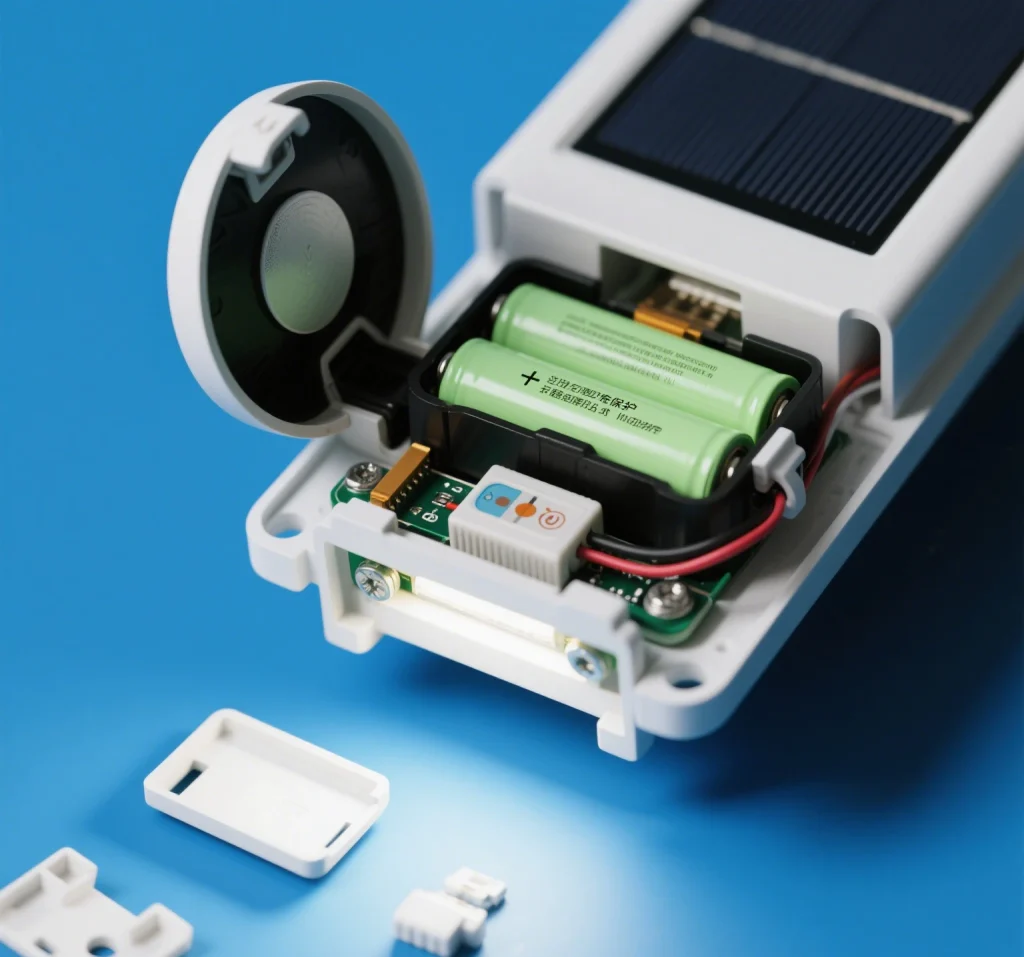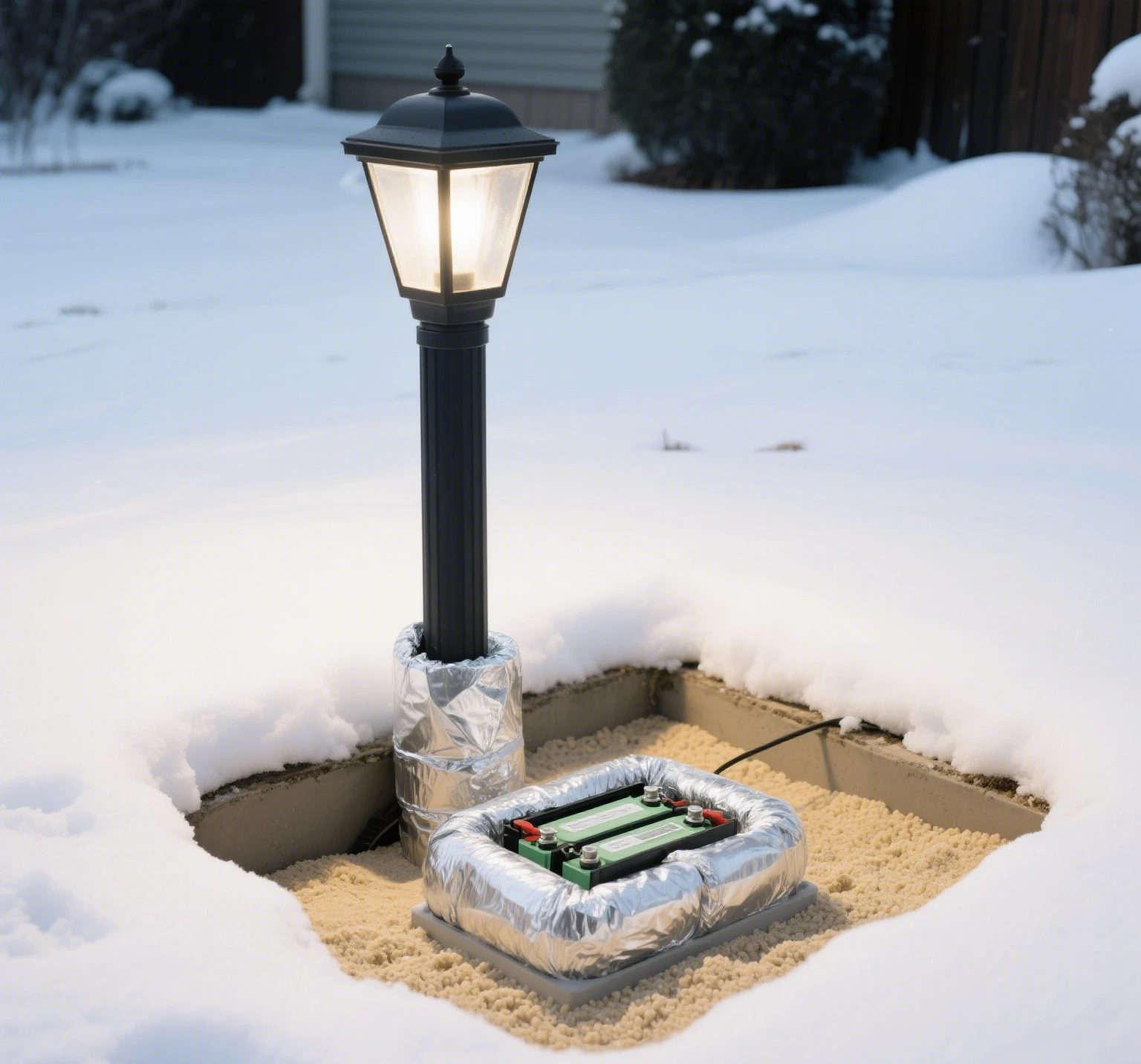Solar lights are a cornerstone of sustainable outdoor illumination, providing an eco-friendly, cost-effective way to light up staircases, pathways, and gardens. However, their performance relies heavily on the quality and condition of their batteries, which typically need replacement every 1-3 years. Selecting the right replacement batteries for solar lights can be challenging due to the variety of battery types and specifications available. This article explores common battery types used in solar-powered garden lights, key parameters to consider when choosing replacements, a step-by-step replacement guide, and recommendations for top-rated brands based on user feedback. By understanding these factors, you can ensure your solar lights outdoor motion sensor continue to shine brightly for years.

Common Battery Types for Solar Lights
Solar lights depend on rechargeable batteries to store energy captured by solar panels during the day, powering the lights at night. The most common battery types in solar-powered garden lights are Nickel-Metal Hydride (NiMH), Nickel-Cadmium (NiCd), and, in some high-end models, Lithium Iron Phosphate (LiFePO4). Each type has unique characteristics that impact performance and suitability.
1. Nickel-Metal Hydride (NiMH)
NiMH batteries are the go-to choice for modern solar outdoor lighting due to their higher capacity, eco-friendliness, and reduced memory effect compared to NiCd. They typically offer 600-2800mAh for AA/AAA sizes, providing 6-12 hours of light per charge. NiMH batteries are less toxic, containing no cadmium, which simplifies disposal. However, they have a higher self-discharge rate (1-3% per month) and may underperform in extreme cold. Brands like Tenergy and Eneloop produce NiMH batteries optimized for solar applications, with users praising their longevity and consistent output.
2. Nickel-Cadmium (NiCd)
NiCd batteries, once common in solar lights outdoor motion sensor, are durable and perform well in extreme temperatures, particularly cold weather (-40°F to 122°F). They charge quickly and handle trickle charging better than NiMH, making them suitable for low-light conditions. However, their lower capacity (600-1000mAh) results in shorter runtime, and they contain toxic cadmium, requiring careful recycling. NiCd batteries also suffer from memory effect, reducing capacity if not fully discharged before recharging. While less popular today, they remain viable for specific climates, as seen in user reviews for brands like GEILIENERGY.
3. Lithium Iron Phosphate (LiFePO4)
LiFePO4 batteries, used in some premium solar-powered garden lights, offer an impressive cycle life (2000+ cycles), high energy density, and excellent performance across a wide temperature range. They are typically 3.2V and found in larger solar lights, such as floodlights. Their higher cost and specific voltage requirements limit their use in standard AA/AAA solar lights. First Light Technologies incorporates LiFePO4 in their commercial solar lights, with users reporting reliable performance in harsh conditions.
Key Parameters for Choosing Replacement Batteries
Selecting the right replacement batteries for solar lights involves evaluating several critical factors to ensure compatibility and optimal performance. Here’s what to consider:
1. Voltage and Size Compatibility
Most solar lights use 1.2V AA or AAA batteries (NiMH or NiCd), though some advanced models require 3.2V LiFePO4 batteries. Check the original battery’s voltage and size, printed on the battery or in the product manual, to ensure compatibility. For instance, replacing a 1.2V NiCd AA with a 1.2V NiMH AA is generally safe, but using a 3.7V Li-ion battery could damage the light.
2. Capacity (mAh)
Battery capacity, measured in milliampere-hours (mAh), determines runtime per charge. Common capacities for solar outdoor lighting range from 600-1300mAh for AA/AAA NiMH batteries, with higher capacities (e.g., 2800mAh) offering longer runtime. However, small solar panels may not fully charge high-capacity batteries in a single day, leading to reduced performance. Experts suggest matching the original battery’s capacity or choosing a slightly higher one (e.g., 600mAh to 800mAh) for optimal results.
3. Battery Chemistry
NiMH is preferred over NiCd for solar-powered garden lights due to its higher capacity and environmental benefits. However, NiCd may be better for cold climates or lights with trickle-charging systems, as NiMH can degrade under constant low-current charging. Avoid mixing NiCd and NiMH in the same light, as their discharge rates differ, risking leaks or damage.

4. Cycle Life and Durability
Cycle life indicates how many charge-discharge cycles a battery can handle, typically 500-2000 for NiMH and 1000 for NiCd. High-quality batteries, like Tenergy’s Solla NiMH (2000 cycles), offer better long-term value. Durability in outdoor conditions, such as resistance to temperature extremes and low self-discharge rates, is also key. NiMH batteries with stay-charge technology (e.g., Eneloop) lose only 2-3% charge per month, ideal for seasonal use.
5. Environmental Impact
NiMH batteries are more eco-friendly, lacking toxic cadmium. NiCd batteries require proper recycling at designated centers to minimize environmental harm. LiFePO4 batteries, while sustainable, are less common in household solar lights but offer long-term environmental benefits.
Step-by-Step Guide to Replacing Solar Light Batteries
Replacing batteries in solar lights outdoor motion sensor is a simple process that can restore your lights’ brightness. Follow these steps:
Step 1: Diagnose the Issue
If your solar light is dim or fails to turn on, test the LED or bulb by inserting a non-rechargeable AA/AAA battery (e.g., alkaline) and placing the light in a dark area to activate the sensor. If the light works, the rechargeable battery needs replacement.
Step 2: Identify Battery Specifications
Remove the old battery and note its size (AA, AAA, etc.), voltage (1.2V or 3.2V), capacity (mAh), and chemistry (NiMH, NiCd, or LiFePO4). This information is usually printed on the battery or in the product manual.
Step 3: Purchase Replacement Batteries
Choose replacement batteries for solar lights that match the original specifications. For example, replace a 1.2V 600mAh NiCd AA with a 1.2V 600-800mAh NiMH AA. Avoid significantly higher capacities, as they may not charge fully.
Step 4: Prepare the Solar Light
Clean the solar panel with a soft cloth and mild soapy water to maximize solar panel efficiency. Dirt or debris can reduce charging performance, impacting the new battery’s effectiveness.
Step 5: Install the New Battery
Open the battery compartment (usually via a screw or clip), remove the old battery, and insert the new one, ensuring correct polarity (+/-). Secure the compartment to maintain waterproofing.
Step 6: Charge and Test
Place the light in an area with direct sunlight exposure for 6-8 hours to fully charge the new battery. Pre-charging NiMH batteries in a separate charger can enhance initial performance. Test the light at night to confirm brightness and runtime.
Step 7: Dispose of Old Batteries
Recycle NiCd batteries at designated centers due to their toxic cadmium content. NiMH and LiFePO4 batteries can also be recycled at electronics or battery recycling facilities to reduce environmental impact.
Recommended High-Rated Battery Brands
Based on user reviews and performance, here are three top-rated replacement batteries for solar lights for solar-powered garden lights:
- Tenergy Solla Premium NiMH AA Batteries
- Specifications: 1.2V, 1300mAh, 2000 cycles, low self-discharge.
- Why It Stands Out: Optimized for outdoor solar lights, these batteries offer 6-8 hours of light and excellent durability. Amazon users praise their performance in brands like Intermatic and Malibu, with some reporting over two years of reliable use.
- Best For: General-purpose solar outdoor lighting with AA battery slots.
- Panasonic Eneloop NiMH AA/AAA Batteries
- Specifications: 1.2V, 800mAh (AAA) or 2000mAh (AA), 2100 cycles, stay-charge technology.
- Why It Stands Out: Eneloop’s low self-discharge rate (2-3% per month) makes them ideal for seasonal solar lights outdoor motion sensor. Users on Reddit and Amazon commend their reliability in low-light conditions and lifespan exceeding three years.
- Best For: Solar lights used intermittently or in shaded areas.
- GEILIENERGY NiCd AA Batteries
- Specifications: 1.2V, 1000mAh, 1000 cycles, cold-weather resistant.
- Why It Stands Out: Affordable and effective in cold climates, these NiCd batteries are compatible with Malibu and Intermatic solar lights. Amazon reviews highlight their consistent performance in harsh winter conditions.
- Best For: Solar-powered garden lights in cold regions.
Conclusion
Choosing the best replacement batteries for solar lights is critical for maintaining the performance of your solar outdoor lighting. NiMH batteries, like Tenergy Solla and Panasonic Eneloop, offer high capacity and eco-friendliness, while NiCd options, such as GEILIENERGY, excel in cold climates. By matching voltage, size, and capacity, following proper replacement steps, and ensuring solar panel efficiency, you can keep your solar lights outdoor motion sensor shining brightly. With durable, user-rated batteries and regular maintenance, your solar lights will continue to enhance outdoor spaces sustainably and reliably.


Leave a Reply